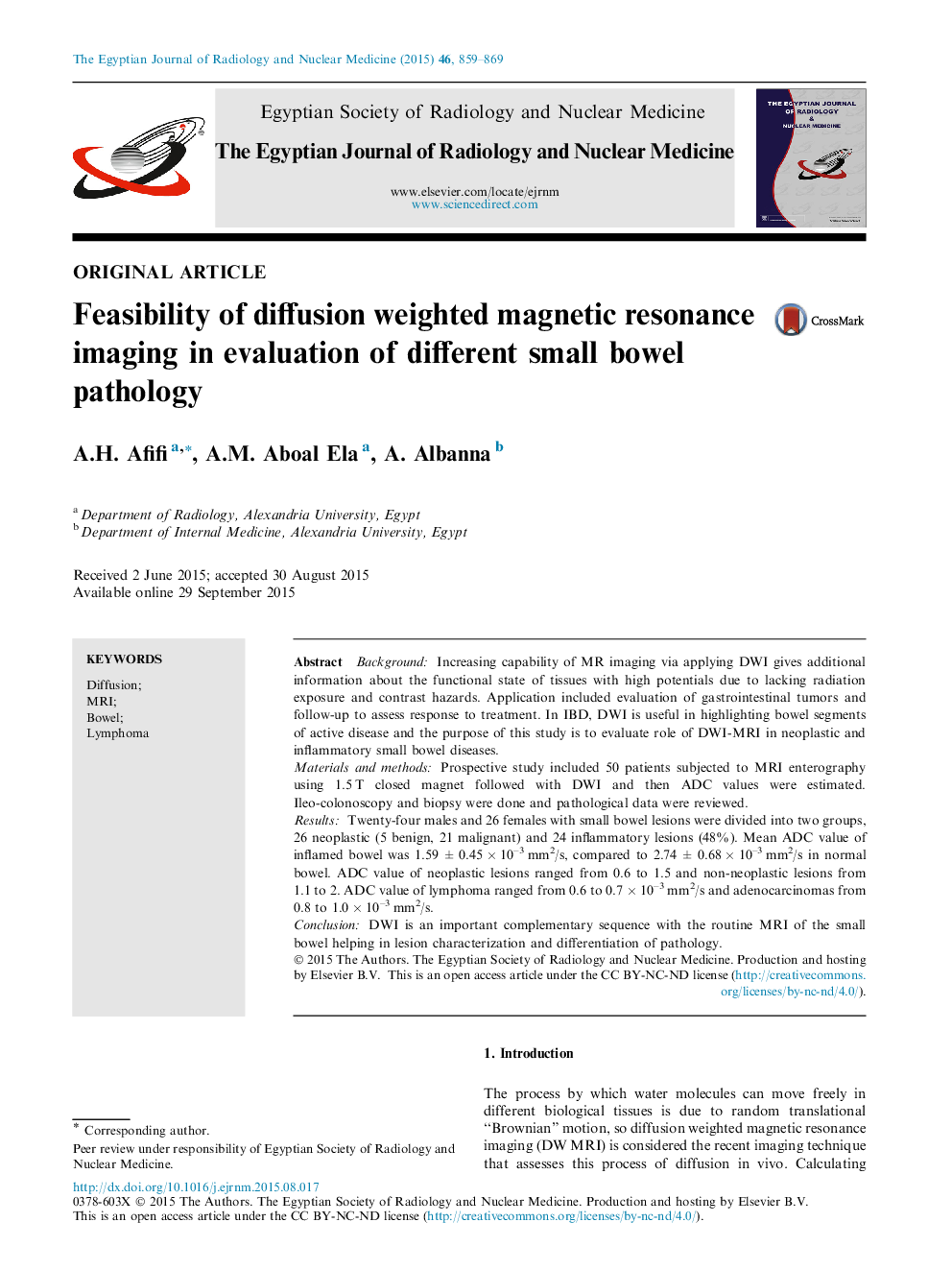| Article ID | Journal | Published Year | Pages | File Type |
|---|---|---|---|---|
| 4224447 | The Egyptian Journal of Radiology and Nuclear Medicine | 2015 | 11 Pages |
BackgroundIncreasing capability of MR imaging via applying DWI gives additional information about the functional state of tissues with high potentials due to lacking radiation exposure and contrast hazards. Application included evaluation of gastrointestinal tumors and follow-up to assess response to treatment. In IBD, DWI is useful in highlighting bowel segments of active disease and the purpose of this study is to evaluate role of DWI-MRI in neoplastic and inflammatory small bowel diseases.Materials and methodsProspective study included 50 patients subjected to MRI enterography using 1.5 T closed magnet followed with DWI and then ADC values were estimated. Ileo-colonoscopy and biopsy were done and pathological data were reviewed.ResultsTwenty-four males and 26 females with small bowel lesions were divided into two groups, 26 neoplastic (5 benign, 21 malignant) and 24 inflammatory lesions (48%). Mean ADC value of inflamed bowel was 1.59 ± 0.45 × 10–3 mm2/s, compared to 2.74 ± 0.68 × 10–3 mm2/s in normal bowel. ADC value of neoplastic lesions ranged from 0.6 to 1.5 and non-neoplastic lesions from 1.1 to 2. ADC value of lymphoma ranged from 0.6 to 0.7 × 10–3 mm2/s and adenocarcinomas from 0.8 to 1.0 × 10–3 mm2/s.ConclusionDWI is an important complementary sequence with the routine MRI of the small bowel helping in lesion characterization and differentiation of pathology.
